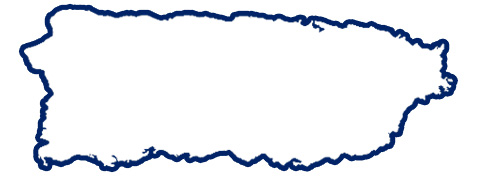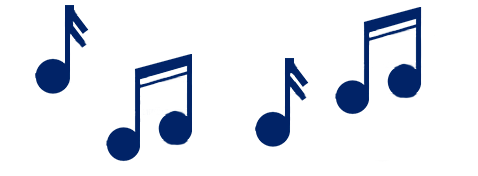- Personal
- AccountsHow can we help you?ToolsMy Online Bank 24/7
- Access your accounts
- Deposit and withdraw
- Pay your bills
- Transfer funds from your accounts
- Credit Cards & LoansHow can we help you?ToolsApply for a personal loan to consolidate your debt
- From $2,000 up to $75,000
- 12 to 84 months’ terms
Benefits for credit card customersLearn more - Insurance & InvestmentsNeed insurance?Plan for the futureQuote an Insurance
Contact one of our representatives.
Insurance ClaimsBegin your claim here, call 787.706.4111 (dial 1 for Customer Service) or visit our offices on workdays, Monday through Friday from 8:00 a.m. to 5:00 p.m.
- ServicesTargeted SegmentsMore ServicesMy Online Bank 24/7
- Access your accounts
- Deposit and withdraw
- Pay your bills
- Transfer funds from your accounts
Turns and Appointments in branchesLearn more
- Accounts
- Business
- Popular One
- About us

How can we help you?
Fifth decade
1933 to 1943
Puerto Rico
- The Great Depression continued unabated in the United States and Puerto Rico.
- The desperate economic and social predicament of all strata of Puerto Ricans worsened in the years leading up to World War II.
- Essential goods from the United States were procured at a high cost. The price of sugar plummeted, the coffee market bottomed out, tobacco sales diminished, and the banks had little money to lend. Many growers and businessmen were ruined, and others curbed their production.
- Industrialization slowed down and government revenue declined precipitously, along with wages and the employment rate.
- Children were removed from school by their parents to work on other activities. Women and young girls were contracted out for domestic work and especially sewing were often the only source of income during the agricultural down-time season.
- There were several major strikes, including a large one that affected 29 out of the 41 sugar mills, which also attracted the support of workers in other industries.
- The federal and local government implemented social programs, like PRERA, PRRA, and the Chardón Plan, to respond to the population’s growing needs in healthcare, employment, education, the economy, infrastructure improvement, housing, and rural electrification. These programs also promoted industrialization.
- In 1938, Jesús T. Piñero and Luis Muñoz Marín founded the Popular Democratic Party and in 1939, World World II broke out and Puerto Rico’s soldiers heeded the call to arms.

Banco Popular
- Although with difficulty and through many great challenges, Popular could overcome this period, which resulted in a stronger and more prosperous institution that numbered some 30 employees.
- Deft management of each crisis was the key to the bank’s survival, and the architect of this success was don Rafael Carrión Pacheco, as much for el Banco as he was for Puerto Rico’s finances.
- In 1934, Banco Popular inaugurated its first locations in Río Piedras, Parada 17, and Caguas.
- In addition, in the face of significant opposition, the bank began the process of building its new headquarters in Old San Juan, the most visible symbol of its growth.
- To implement the recapitalization of the Bank, don Rafael accumulated enough cash assets to surpass the value of the bank’s deposits.
- In 1936, Banco Popular completed its acquisition of the Banco de Puerto Rico, and its accounts brought in $3 million in cash and $6 million in deposits. The bank also assumed responsibility for the liquidation of the Banco Commercial and the Banco Territorial y Agrícola.
- Under his leadership, aided by the dedicated work of his son, Rafael Carrión, Jr., the bank could get the FHA home ownership loan program extended to Puerto Rico. This was a major step forward for the bank, as well as for Puerto Rican families.

Music
- The first urban troubadours appeared and began to interpret traditional Christmas music.
- Aside from the success of Manuel Jiménez “El Canario” and Maestro Ladí, and other artists started their own ascent, such as Chuíto de Cayey, Chuíto de Bayamón, and Ramito.
- In New York, many Puerto Rican musicians distinguished themselves, such as Los Jardineros, Los Bohemios Puertorriqueños, and the Cuartero Flores.
- Bolero’s golden age dawned in this period. Rafael Hernández and Pedro Flores continued to produce big hits and garner acclaim for their work.
- In 1937, Rafael Hernández composed two of his masterpieces: Lamento Borincano and Preciosa.
- One of the singers of the Cuarteto Flores was Daniel Santos, considered one of the great Puerto Rican interpreters of Latin American songs in the 20th century.
- Myrta Silva was a vocalist in the Cuarteto Victoria in New York, as well as Pedro Ortiz “Davilita”.
- Bobby Capó and José Luis Moneró began their careers.
- In classical music, several Puerto Ricans distinguished themselves at a global level, such the tenor Antonio Paoli, the cellist Pablo Casals (who had a Puerto Rican mother), and the pianist Jesús María Sanromá.
- The doctor Bartolomé Bover founded the Masa Coral, today the site of the University Interamericana.
- The Coro de la Universidad the Puerto Rico was founded by the master Augusto Rodríguez.

Christmas Tree
- Due to the Great Depression, tree decorations consisted primarily of handmade crafts.
- On occasion, people used pinecones and paper decorations made with colored wax like Crayola crayons, and they were very popular since plastic decorations could be quite expensive.
 Puerto Rico
Puerto Rico 


